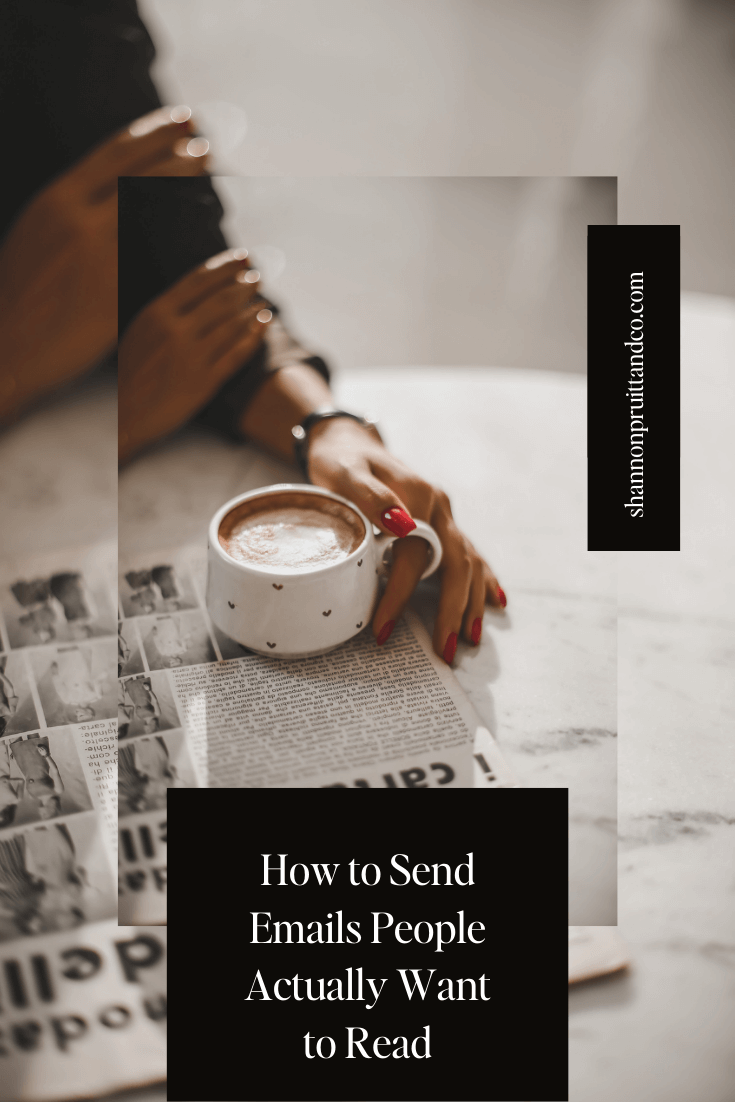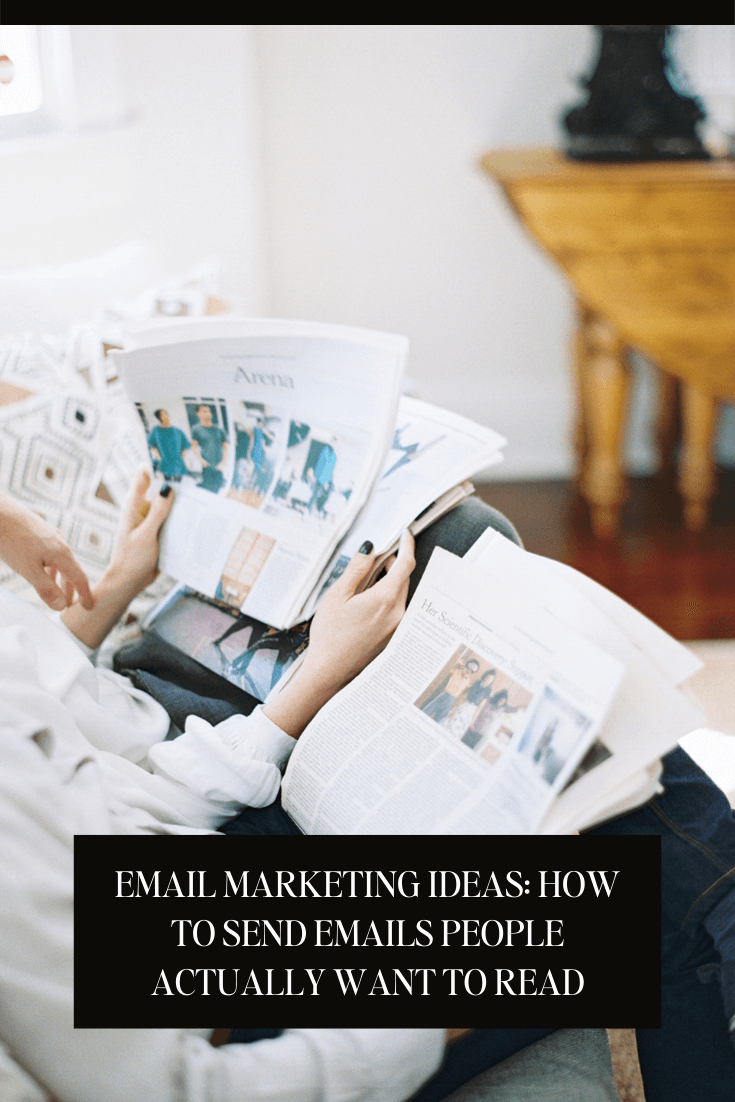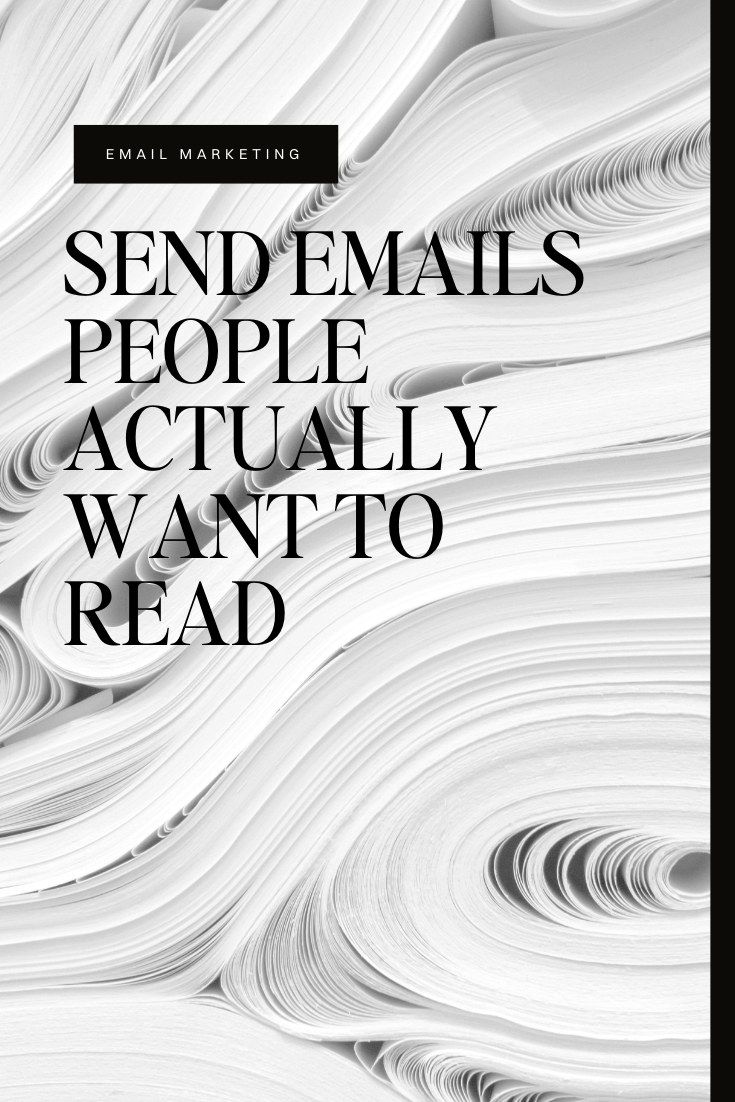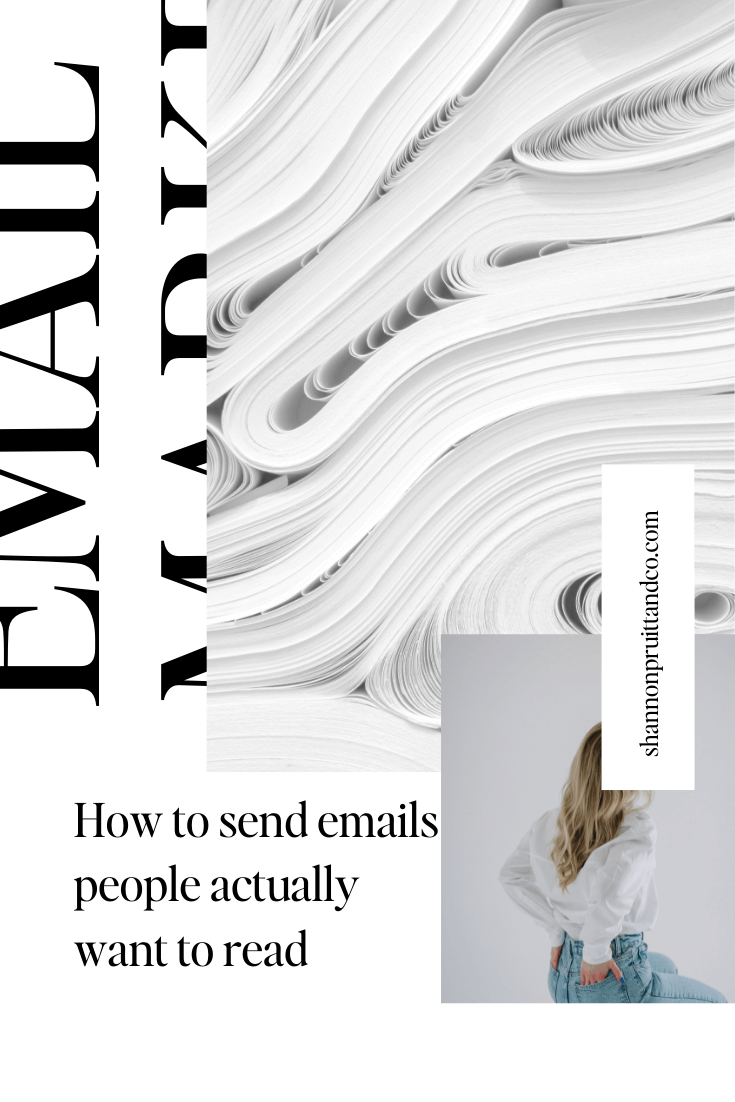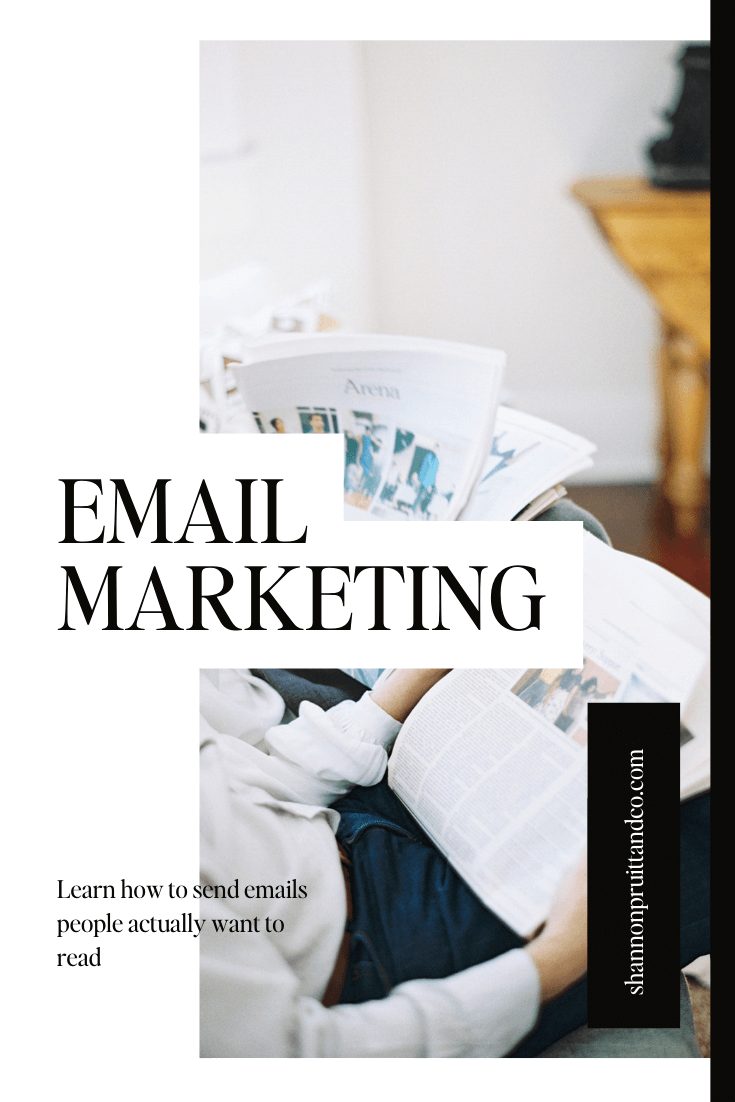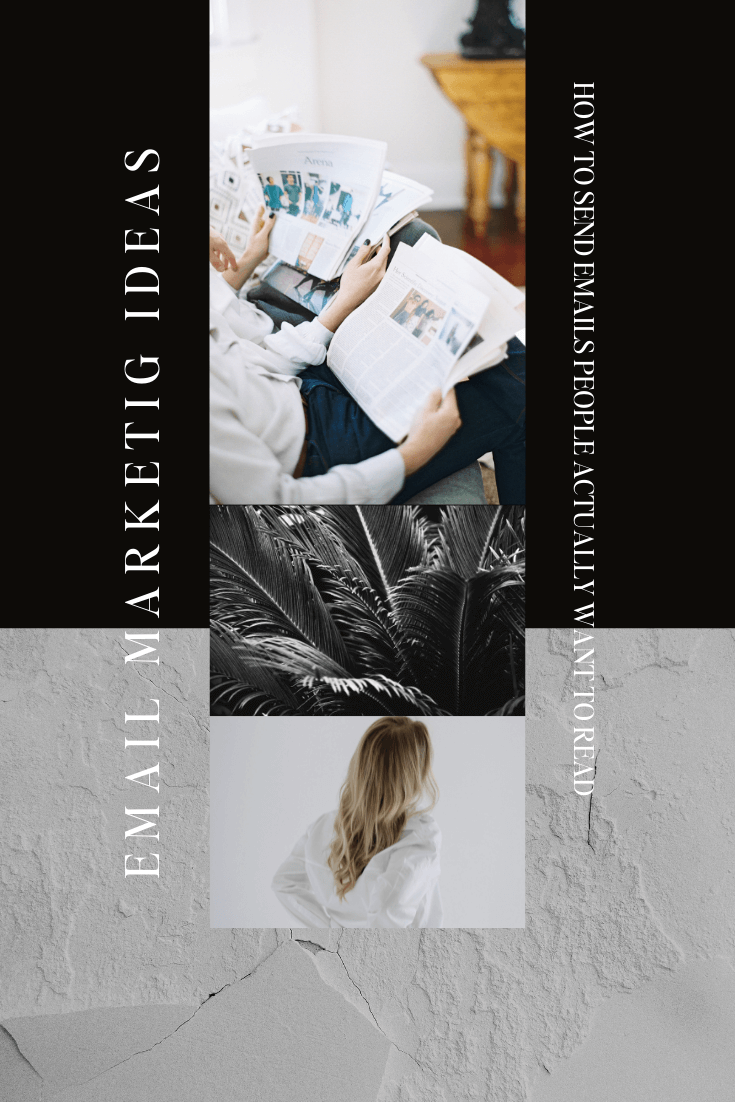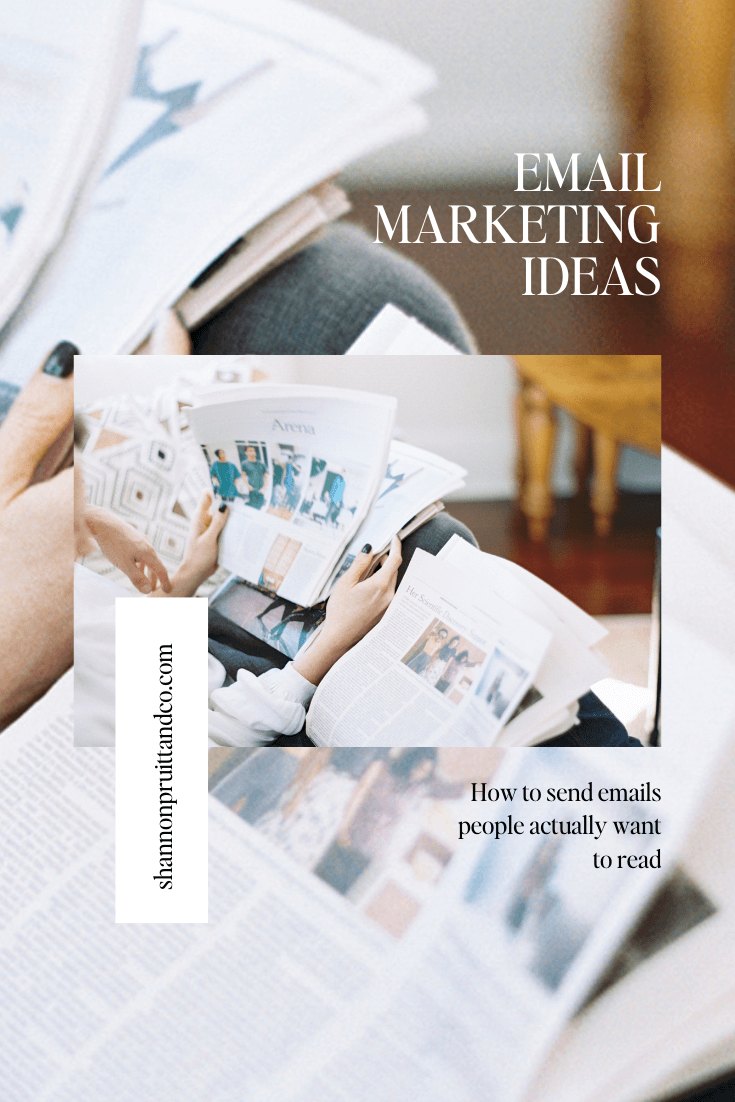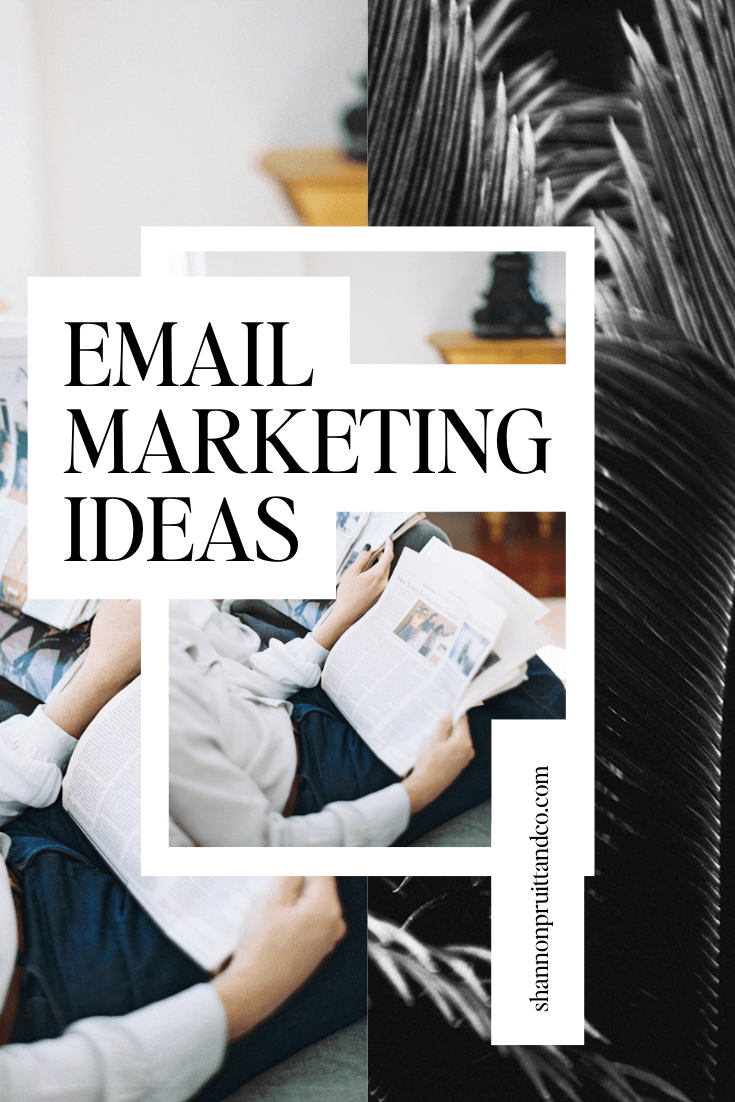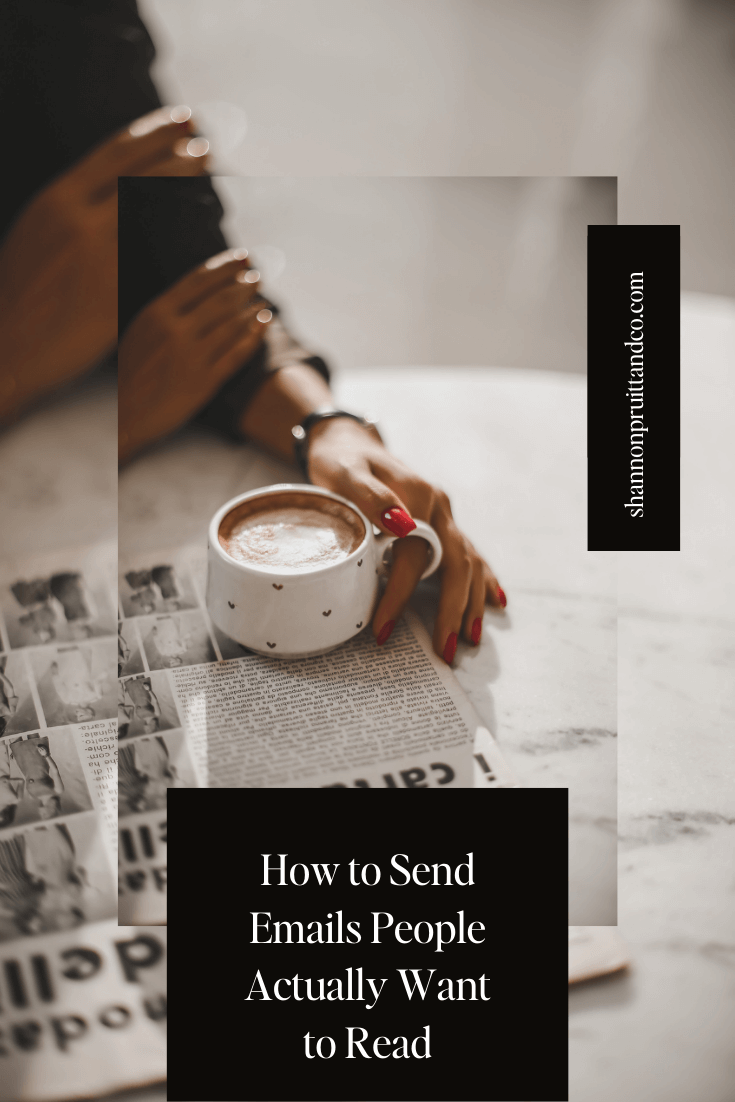
Email Marketing Newsletter Ideas: How to Send Emails People Actually Want to Read
So you want to send an email newsletter but aren’t sure how often to send it, what to talk about, or when to send it?
I get it. Email list building and email marketing can bring up anxiety, confusion, and overwhelm.
But it’s important. Especially with social media changing (and you don’t even own that content or your followers).
So I’m here to help empower you to build your email list through strategic, intentional, and human-centered ways.
Recently I talked about building your email list with a lead magnet, so be sure to check that out.
And if you’re ready, let’s get to the next question that naturally comes next: What do you do once you actually get people on your email list?
Answer: You send consistently value-packed emails to build trust, credibility, and intrigue with the end goal of converting your subscribers to paying customers or clients.
But how the heck do I do that, Shannon?
I’m going to walk you through that today, and I’m going to start by saying: DO NOT SEND AN EMAIL NEWSLETTER.
Mic drop.
What is an email newsletter?
An email newsletter is a regular email that you send to your subscribers. Most often there’s an overarching theme or a specific topic that gets covered.
BUT… I have an unpopular opinion about email newsletters…
I spoke about this on Instagram recently and had some really good conversations in my DMs about it.
So, let’s flip the script a little. Don’t think of your email list as a newsletter list.
Newsletters are boring. They don’t get read. They get pushed to the Gmail Promotion tab where they go to die among other salesy emails and other boring newsletters.
I’m guessing you don’t actually open and read many newsletters, right? If you’re anything like me, you’re on 219 email lists and you don’t even open the ones that are newsletters. They either sit in your inbox forever. Or you flat-out delete them without even opening them.
Why? Because they’re boring. They offer you no value. No benefit.
Do you think your subscribers REALLY want to receive a newsletter, or would they rather receive something more exciting and more valuable?
If you’re like most business owners and entrepreneurs, you’re on the content creation hamster wheel. Adding one more piece of content in the style of a round-up newsletter is just another way to push more content down your audience’s throats.
Sure, it’s ok to give them a little insight into what they may have missed on your blog or social media, but please don’t make this what your entire email is about.
Remember—your subscribers willingly gave you their email address, trusting you to bring more value to the table. So give them value-packed, relatable emails that connect and show you’re a real person. Invite them into a conversation with you. Yes—literally ask them to reply to your email. You may be surprised as to how many people reply.
So if you’re not treating this as a newsletter, what do you write about?
First Step: Figure out the purpose of your email.
The purpose of my weekly emails is to educate and inspire modern entrepreneurs to refine their online presence. I email them tips and resources to help them do this. I promote my own offers and give them first access to any promos, bonuses, or specials.
Figure out the purpose of your emails. And then remind yourself of your purpose every single time you sit down to write an email. This way you stay focused. You’ll filter out topics. You’ll build more trust and credibility.
Second Step: What’s your specialty?
What umbrella do all of your core offerings fall under? That’s your expertise. So email your list about these topics.
Mine fall under Digital Marketing. I specialize in Web Design, Copywriting, Content Writing, Email Marketing, SEO, and Business Productivity. So, those are the topics of my emails.
Third Step: Figure out value-packed topics your audience craves to know more about.
Once you have those overarching topics, think about sub-topics your audience loves and craves to know more about. Then think about how you can give more value than someone else is giving. What’s something people would be willing to pay for? (Yes, even if it’s just $5.)
Brainstorm a big ol’ list.
Keep a note on your phone with “Content Ideas” or “Newsletter Ideas”, and whenever you think of a cool, unique topic, write it down. (This is a great way to keep track of content ideas for your blog and social media, too.)
You can also totally repurpose old blog posts or YouTube videos into your weekly emails. If you have longer blog posts, you can even split them in parts, and send a series of emails.
-
For example, let’s say you’re a Wedding Planner emailing your list of engaged couples. Maybe you have an old blog post about the 12 biggest mistakes in wedding planning. Why not make it a series? Email 1 could focus on the first 3 mistakes. Email 2 could focus on the next 3 mistakes. And so on.
-
Add a little extra content or a freebie in there to give it a bit of an upgrade, though. Remember: your subscribers willingly gave you their email address. That’s no small gesture. So give them even more value as a thank you.
How long do my emails need to be?
They don’t have to be long.
I have sent 100-word emails. I have sent 640-word emails.
I personally try to vary the length of my emails. Some weeks they’re longer and packed full of high-value content. Other weeks they’re super short and serve as a “Hey—I appreciate you” type of email. Sometimes those short ones are just fun and encouraging to my subscribers (And tbh–those are the ones that get the most replies.)
How often do I email my list?
Weekly.
If you don’t email your subscribers once per week, you risk them forgetting about you.
“Recognizing a sender is the most important factor in deciding to open an email, followed by actually having the time to read an email.” (Hubspot) So if your subscribers don’t recognize who you are, they’re not going to open your email, much less read it. You’ve got to help them remember.
If you email them every week, not only do they remember who you are, but they know what to expect.
If you send biweekly emails, they’re going to forget who you are every 13 days.
If you only send a monthly email, they’re not even going to remember subscribing to your list.
And in those two cases, here’s what happens:
-
subscribers will unsubscribe
-
subscribers will delete your emails without opening them (or let them pile up with that Promotions tab with all the other emails they don’t remember subscribing to)
-
subscribers will never turn into paying customers
Oof.
The whole point of having an email list is to engage a group of subscribers who you build that like-know-trust factor with so that they eventually become paying clients or customers.
That’s not going to happen if you only email them once per month.
And as far as which day of the week to send your email—it depends. There are several studies out there that claim certain days of the week and certain times of day are better than others. But you need to think about YOUR audience: their lifestyle, their behaviors, their schedule.
For example:
-
Stay-at-home moms are busy throughout the day. They may check their email early in the morning, possibly during naptimes, and later in the evening once the kids are in bed. It may not make sense to send an email to them at 9am.
-
Small business owners might check their email first thing at the start of the workday and again at the end of the workday. It may not make sense to send them an email at 2pm.
-
Wedding vendors are super busy Friday-Sunday, so they’re less likely to check email then. Your best bet to getting them to open your emails is Monday-Thursday.
Whatever day of the week you choose, stick with it. Be consistent. It all comes back to helping your subscribers know what to expect. And if they expect to receive your email every Monday, they’re going to be pumped to see it land in their inbox.
How do I increase my email open rates?
First of all, let’s talk about what an email open rate is.
An email open rate is the percentage of subscribers who open a specific email out of your total number of subscribers (Campaign Monitor).
Higher open rates mean more people are reading your emails which means more people are exposed to what you offer. So while they may not convert into paying customers right off the bat, they’re at least becoming warm leads who stay engaged.
Second, let’s talk about things that affect open rates
You need to aim for your emails to land in Gmails primary tab. You literally have to ask and show them how to do it. Screenshot. And remind them why they should do that— remind them of what they’ll receive from your emails.
What other email marketing tips do I need to know?
Brand your emails.
Give your list a name. I literally call mine “The List”, and my weekly email is “The Scoop”.
Talk about it.
Mention your email often on social media. Talk about it. Invite people to sign up. Create FOMO for those who aren’t on your email list. And be sure you remind them of the benefits they’ll receive from being a part of your insider group.
Be consistent.
I sound like a broken record here, but consistency is key. Consistency on the amount you email your list. Consistency on the day of the week you send the emails. Consistency in the design and format of your emails. (Flodesk makes designing your emails easy-breezy.)
Invite your subscribers to reply to you.
Encourage it, even. In every single email. This is going to do a couple of things:
-
It’s going to tell Gmail and other email providers that you’re legit because people are not only opening your emails; they’re also replying to you.
-
It’s going to help build your community, your like-know-trust factor, and your credibility.
Write as if you’re chatting with a friend.
Be conversational in your emails. It’s totally fine to imagine you’re sending an email to a friend. You want to be friendly. Use your normal voice.
What are the best emails to subscribe to?
Want some email marketing inspiration and ideas? Here are some of my favorite emails to receive:
-
The Morning Brew (daily marketing and news email)
-
The Social Bungalow (weekly marketing and business email)
-
James Clear (weekly business and inspirational email)
-
The Skimm (daily, easy-to-digest news brief)
-
Marketing Examples (weekly marketing email)
-
Please Advise (Quick and easy marketing reads)
-
HubSpot (all things marketing and business)
-
Tonic Site Shop (Jen’s a clever writer. I look forward to her stories every week)
-
Cole Schafer (No BS copywriter)
-
(shameless plug) SP&C The Scoop
Note: While it’s cool to keep a swipe file of inspiration, these emails should be just that—inspiration. Do not copy other people. Don’t be a jerk.
That’s it. Now go write better emails. Or hire someone to do it for you.
You might also be interested in…




